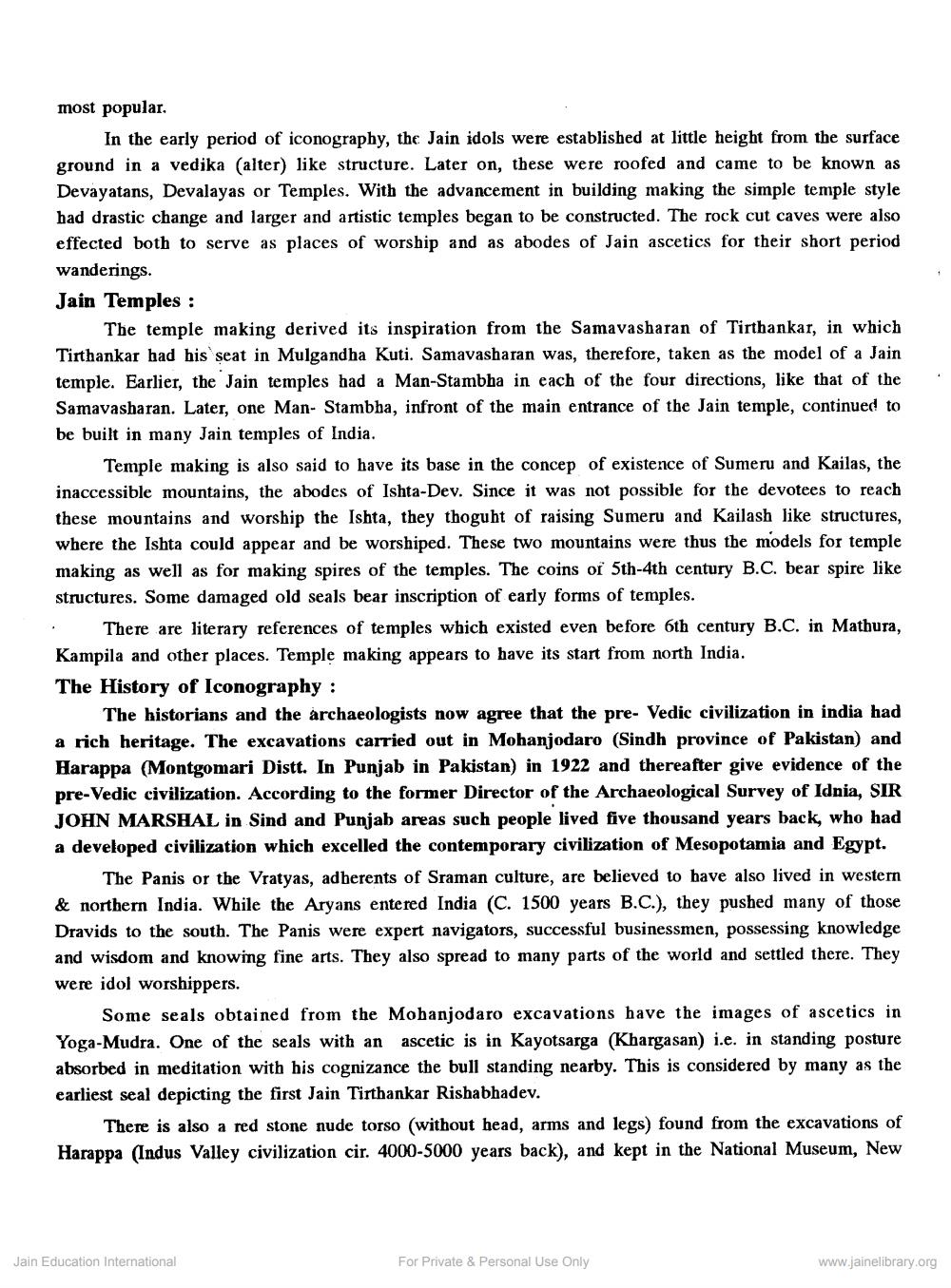________________
most popular,
In the early period of iconography, the Jain idols were established at little height from the surface ground in a vedika (alter) like structure. Later on, these were roofed and came to be known as Devayatans, Devalayas or Temples. With the advancement in building making the simple temple style had drastic change and larger and artistic temples began to be constructed. The rock cut caves were also effected both to serve as places of worship and as abodes of Jain ascetics for their short period wanderings. Jain Temples :
The temple making derived its inspiration from the Samavasharan of Tirthankar, in which Tirthankar had his seat in Mulgandha Kuti. Samavasharan was, therefore, taken as the model of a Jain temple. Earlier, the Jain temples had a Man-Stambha in each of the four directions, like that of the Samavasharan. Later, one Man- Stambha, infront of the main entrance of the Jain temple, continued to be built in many Jain temples of India.
Temple making is also said to have its base in the concep of existence of Sumeru and Kailas, the inaccessible mountains, the abodes of Ishta-Dev. Since it was not possible for the devotees to reach these mountains and worship the Ishta, they thoguht of raising Sumeru and Kailash like structures, where the Ishta could appear and be worshiped. These two mountains were thus the models for temple making as well as for making spires of the temples. The coins or 5th-4th century B.C. bear spire like structures. Some damaged old seals bear inscription of early forms of temples. . There are literary references of temples which existed even before 6th century B.C. in Mathura, Kampila and other places. Temple making appears to have its start from north India. The History of Iconography :
The historians and the archaeologists now agree that the pre- Vedic civilization in india had a rich heritage. The excavations carried out in Mohanjodaro (Sindh province of Pakistan) and Harappa (Montgomari Distt. In Punjab in Pakistan) in 1922 and thereafter give evidence of the pre-Vedic civilization. According to the former Director of the Archaeological Survey of Idnia, SIR JOHN MARSHAL in Sind and Punjab areas such people lived five thousand years back, who had a developed civilization which excelled the contemporary civilization of Mesopotamia and Egypt.
The Panis or the Vratyas, adherents of Sraman culture, are believed to have also lived in western & northern India. While the Aryans entered India (C. 1500 years B.C.), they pushed many of those Dravids to the south. The Panis were expert navigators, successful businessmen, possessing knowledge and wisdom and knowing fine arts. They also spread to many parts of the world and settled there. They were idol worshippers.
Some seals obtained from the Mohanjodaro excavations have the images of ascetics in Yoga-Mudra. One of the seals with an ascetic is in Kayotsarga (Khargasan) i.e. in standing posture absorbed in meditation with his cognizance the bull standing nearby. This is considered by many as the earliest seal depicting the first Jain Tirthankar Rishabhadev.
There is also a red stone nude torso (without head, arms and legs) found from the excavations of Harappa (Indus Valley civilization cir. 4000-5000 years back), and kept in the National Museum, New
Jain Education International
For Private & Personal Use Only
www.jainelibrary.org




